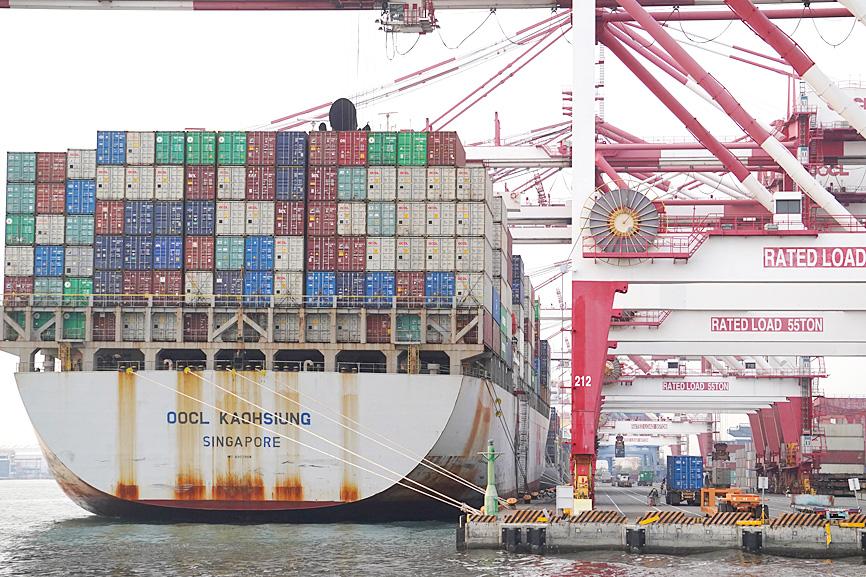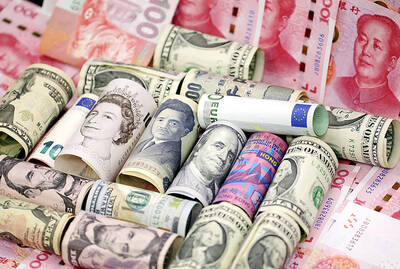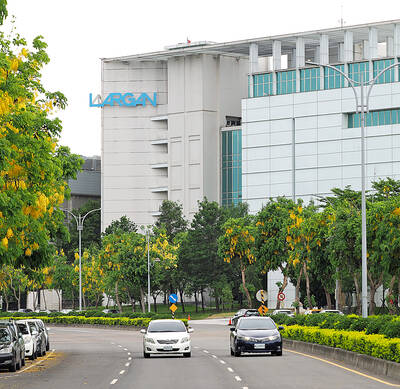Export orders hit a new record of US$51.6 billion last month, growing for an eighth straight month on an annual basis, bolstered by strong demand for smartphones, game consoles and 5G-related applications, the Ministry of Economic Affairs said yesterday.
The figure represented a monthly expansion of 3.1 percent from US$50.03 billion and 9.1 percent from US$47.28 billion a year earlier.
Export orders have continued to trend up this month, likely reaching US$51 billion to US$52.5 billion, the ministry said.

Photo: CNA
That would represent an annual growth of 14.53 to 17.89 percent from US$44.53 billion in November last year.
“The release of a major international smartphone products, as well as continued strong demand for ICT [information and communications technology] products has given us another strong month,” Department of Statistics Director Huang Yu-ling (黃于玲) said. “Panel makers told us that demand is outpacing supply.”
Orders for ICT products grew 22.2 percent month-on-month, or 4.4 percent annually, to US$17 billion last month, ministry data showed.
Electronic products weighed in at US$15.2 billion, down 5.2 percent month-on-month, but up 17.5 percent year-on-year.
Optical products dropped 5.5 percent month-on-month to US$2.3 billion last month, but registered an annual growth of 16.8 percent.
“September was probably the absolute peak for electronic products orders, but we can see from the year-on-year growth that the COVID-19-related demand for electronic products is still going strong,” she said.
Orders for basic metals were US$2.3 billion, up 6.1 percent month-on-month and 11.5 percent year-on-year.
Huang attributed the growth to recent increases in international steel prices.
Orders for machine tools shrank 1.3 percent month-on-month to US$1.9 billion, but grew 13.2 percent annually.
Orders for petrochemical products inched up 0.4 percent to US$2.1 billion last month from a month earlier, representing an annual expansion of 13.1 percent.
“Demand for consumer products is warming up,” Huang said.
Regionally, the US accounted for US$17 billion orders last month, up 13.6 percent month-on-month and 17.1 percent year-on-year.
China and Hong Kong accounted for US$11.8 billion in orders, down 18 percent month-on-month, but up 10.7 percent year-on-year.
The EU accounted for US$11.4 billion in orders, up 29.8 percent month-on-month, but down 0.1 percent year-on-year.
ASEAN came in fourth, with US$4.1 billion in orders, down 6.9 percent month-on-month, but up 6.1 percent year-on-year.
Due to the strength of the local currency, export orders in New Taiwan dollar terms last month only grew 2.7 percent versus 9.1 percent when calculated in US dollars.
The impact on Taiwanese companies is still “mostly manageable,” Huang said.
“Most larger companies hedge for foreign exchange fluctuations,” she said. “They also tend to be price-setters who can pass on the cost of a stronger NT dollar to their customers.”
However, she acknowledged that small and medium-sized enterprises “would be hurting.”

Taiwan’s foreign exchange reserves hit a record high at the end of last month, surpassing the US$600 billion mark for the first time, the central bank said yesterday. Last month, the country’s foreign exchange reserves rose US$5.51 billion from a month earlier to reach US$602.94 billion due to an increase in returns from the central bank’s portfolio management, the movement of other foreign currencies in the portfolio against the US dollar and the bank’s efforts to smooth the volatility of the New Taiwan dollar. Department of Foreign Exchange Director-General Eugene Tsai (蔡炯民)said a rate cut cycle launched by the US Federal Reserve

Handset camera lens maker Largan Precision Co (大立光) on Sunday reported a 6.71 percent year-on-year decline in revenue for the third quarter, despite revenue last month hitting the highest level in 11 months. Third-quarter revenue was NT$17.68 billion (US$581.2 million), compared with NT$18.95 billion a year earlier, the company said in a statement. The figure was in line with Yuanta Securities Investment Consulting Co’s (元大投顧) forecast of NT$17.9 billion, but missed the market consensus estimate of NT$18.97 billion. The third-quarter revenue was a 51.44 percent increase from NT$11.67 billion in the second quarter, as the quarter is usually the peak

The US government on Wednesday sanctioned more than two dozen companies in China, Turkey and the United Arab Emirates, including offshoots of a US chip firm, accusing the businesses of providing illicit support to Iran’s military or proxies. The US Department of Commerce included two subsidiaries of US-based chip distributor Arrow Electronics Inc (艾睿電子) on its so-called entity list published on the federal register for facilitating purchases by Iran’s proxies of US tech. Arrow spokesman John Hourigan said that the subsidiaries have been operating in full compliance with US export control regulations and his company is discussing with the US Bureau of

Pegatron Corp (和碩), a key assembler of Apple Inc’s iPhones, on Thursday reported a 12.3 percent year-on-year decline in revenue for last quarter to NT$257.86 billion (US$8.44 billion), but it expects revenue to improve in the second half on traditional holiday demand. The fourth quarter is usually the peak season for its communications products, a company official said on condition of anonymity. As Apple released its new iPhone 17 series early last month, sales in the communications segment rose sequentially last month, the official said. Shipments to Apple have been stable and in line with earlier expectations, they said. Pegatron shipped 2.4 million notebook